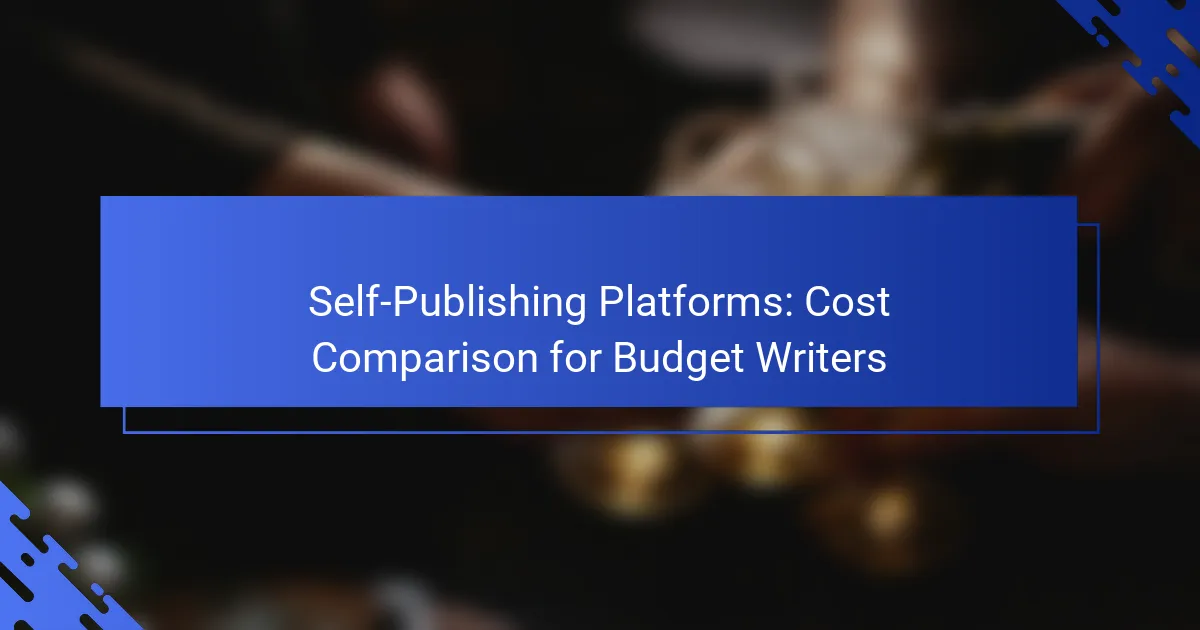For budget writers, selecting the right self-publishing platform is crucial to balancing cost and accessibility. With options that range from free to several hundred dollars, it’s important to evaluate both upfront fees and ongoing royalties. By understanding the unique features of each platform, writers can make informed decisions that align with their publishing goals while minimizing financial risk.
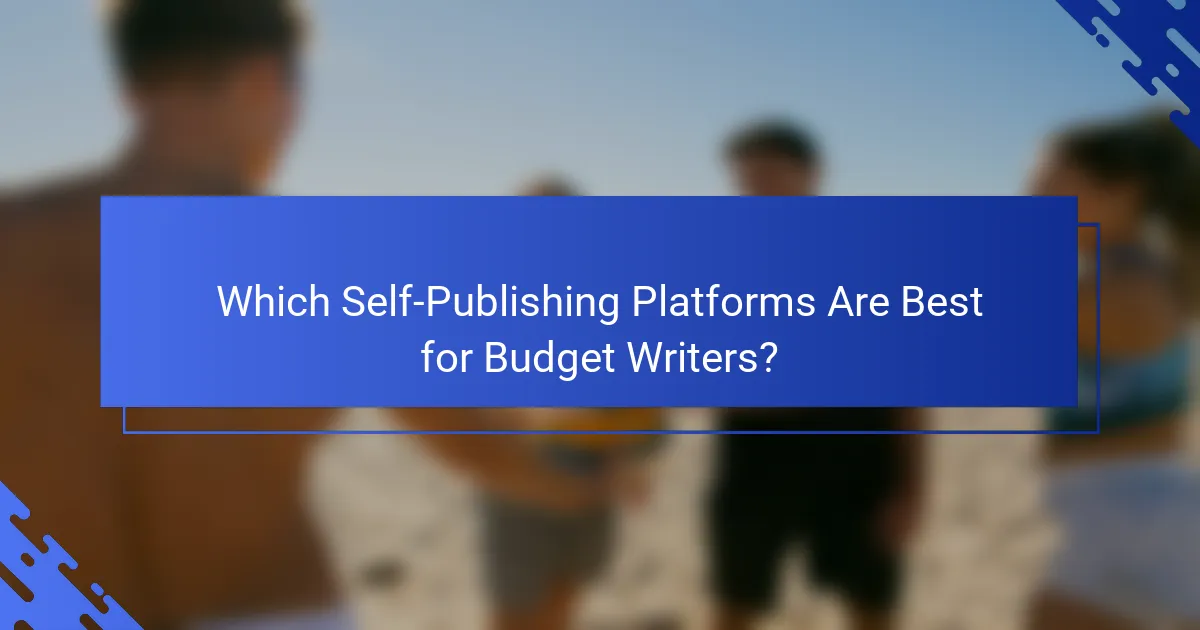
Which Self-Publishing Platforms Are Best for Budget Writers?
Budget writers should consider self-publishing platforms that offer low upfront costs and flexible royalty structures. The best options allow for easy access to a wide audience while minimizing financial risk.
Amazon Kindle Direct Publishing
Amazon Kindle Direct Publishing (KDP) is a popular choice for budget writers due to its zero upfront costs and high royalty rates, typically around 70% for eBooks priced between $2.99 and $9.99. Authors can publish their work quickly and gain access to Amazon’s vast customer base.
However, KDP has specific formatting requirements and exclusivity clauses for certain promotional programs. Writers should ensure their manuscripts meet these standards to avoid delays in publication.
Smashwords
Smashwords is another budget-friendly platform that allows authors to publish eBooks for free. It distributes to multiple retailers, including Apple Books and Barnes & Noble, expanding your reach without upfront fees.
Authors earn around 60-80% royalties depending on the retailer. However, Smashwords requires adherence to its formatting guidelines, which can be complex for new writers. Familiarizing yourself with these requirements is essential to avoid issues during the publishing process.
Draft2Digital
Draft2Digital offers a user-friendly interface and free publishing services, taking a small percentage of royalties (around 10%) instead of charging upfront fees. This platform also provides automatic formatting tools, making it easier for writers to prepare their manuscripts.
Like Smashwords, Draft2Digital distributes to various retailers, enhancing visibility. Writers should consider the trade-off between the percentage taken from royalties and the convenience of their formatting services.
IngramSpark
IngramSpark is ideal for authors looking to publish both print and eBooks, but it does have setup fees, typically around $49 per title. Despite the cost, it offers extensive distribution options through Ingram’s network, which can lead to higher visibility in bookstores.
Writers should weigh the initial investment against potential sales, especially if targeting physical retail markets. IngramSpark also provides promotional codes that can waive setup fees, making it more accessible for budget-conscious authors.
Blurb
Blurb is primarily focused on print books and photo books, allowing authors to create visually appealing products. It offers free publishing with the option to sell directly through its platform or distribute to Amazon and Ingram.
While Blurb’s pricing is competitive, authors should consider production costs for print books, which can vary based on size and quality. Budget writers should calculate these costs to ensure profitability before committing to this platform.
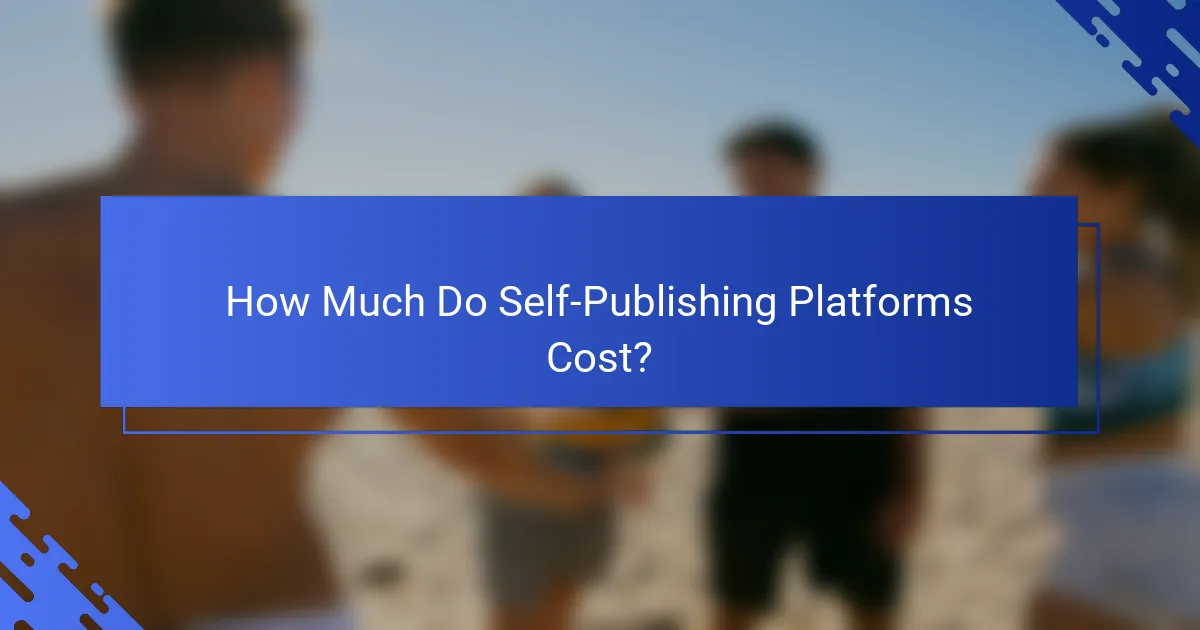
How Much Do Self-Publishing Platforms Cost?
Self-publishing platforms vary widely in cost, with options ranging from free to several hundred dollars depending on services and features. Writers should consider not only upfront fees but also ongoing royalties and commissions when choosing a platform.
Amazon KDP pricing structure
Amazon Kindle Direct Publishing (KDP) has no upfront costs, allowing authors to publish their eBooks for free. However, KDP takes a commission of 30% to 65% on sales, depending on the book’s price and distribution options.
For eBooks priced between $2.99 and $9.99, authors earn 70% royalties, while those priced outside this range receive 35%. Print books incur printing costs deducted from royalties, which can vary based on page count and ink type.
Smashwords fees
Smashwords does not charge upfront fees for publishing, but it retains 10% of the sales revenue as a commission. This platform distributes eBooks to various retailers and libraries, expanding reach without additional costs.
Authors should be aware that pricing strategies can affect visibility and sales on Smashwords, so setting competitive prices is crucial for maximizing earnings.
Draft2Digital commission rates
Draft2Digital also offers free publishing services, taking a 10% cut of the sales revenue from eBooks. This platform provides an easy-to-use interface and distributes to multiple retailers, including Apple Books and Barnes & Noble.
Writers benefit from features like automated formatting and free ISBNs, making it a cost-effective choice for those looking to publish across various platforms.
IngramSpark setup costs
IngramSpark charges a setup fee for publishing, typically around $49 for eBooks and $49 for print books, though promotional codes can reduce these costs. This platform is known for its extensive distribution network, reaching bookstores and libraries worldwide.
Authors should consider the ongoing costs of revisions and updates, as IngramSpark charges additional fees for these changes, making it essential to finalize content before publishing.
Blurb pricing options
Blurb offers a unique approach to self-publishing, particularly for photo books and trade books, with no upfront costs. Instead, authors pay for the printing of their books, which can range significantly based on size and page count.
Blurb provides a pricing calculator to estimate costs, allowing writers to determine their budget before committing. Additionally, authors can sell their books through Blurb’s bookstore or distribute them to other retailers, impacting overall profitability.

What Are the Key Features of Each Platform?
Each self-publishing platform offers unique features that cater to different needs of budget writers. Understanding these key features can help you choose the right platform for your publishing goals.
Distribution options
Distribution options vary significantly among self-publishing platforms. Some platforms, like Amazon Kindle Direct Publishing (KDP), provide extensive reach by distributing to major retailers and libraries, while others may focus on niche markets. Consider whether you want your book available globally or in specific regions.
For example, platforms like Draft2Digital distribute to multiple retailers including Apple Books, Barnes & Noble, and Kobo, which can enhance your book’s visibility. Evaluate the distribution channels offered to ensure they align with your target audience.
Formatting tools
Formatting tools are essential for preparing your manuscript for publication. Many platforms offer built-in formatting tools that simplify the process, allowing you to create a professional-looking book without needing advanced design skills. For instance, KDP provides a user-friendly tool that guides you through formatting your eBook and paperback.
However, some platforms may require you to format your manuscript externally before uploading. Check the specific formatting requirements and tools available to avoid any last-minute issues.
Royalties and payments
Royalties and payment structures can significantly impact your earnings as a self-published author. Most platforms offer royalty rates ranging from 35% to 70%, depending on factors like pricing and distribution choices. For example, KDP offers 70% royalties for eBooks priced between $2.99 and $9.99.
Be mindful of any fees that may affect your overall earnings, such as delivery costs for eBooks. Understanding the payment schedule is also crucial, as some platforms pay monthly while others may have longer cycles.
Marketing support
Marketing support varies widely across self-publishing platforms. Some, like KDP, offer promotional tools such as Kindle Countdown Deals and free book promotions to help boost visibility. Others may provide limited marketing resources, requiring you to handle most promotional efforts independently.
Consider whether the platform offers additional marketing services, such as advertising options or partnerships with book promotion sites, to enhance your book’s reach and sales potential.
Customer service
Customer service quality can greatly affect your self-publishing experience. Platforms with robust customer support often provide resources such as FAQs, live chat, or email assistance. For instance, IngramSpark is known for its responsive customer service, which can be beneficial for troubleshooting issues.
Before choosing a platform, research user reviews regarding customer service experiences. A responsive support team can help you navigate challenges more effectively and ensure a smoother publishing process.
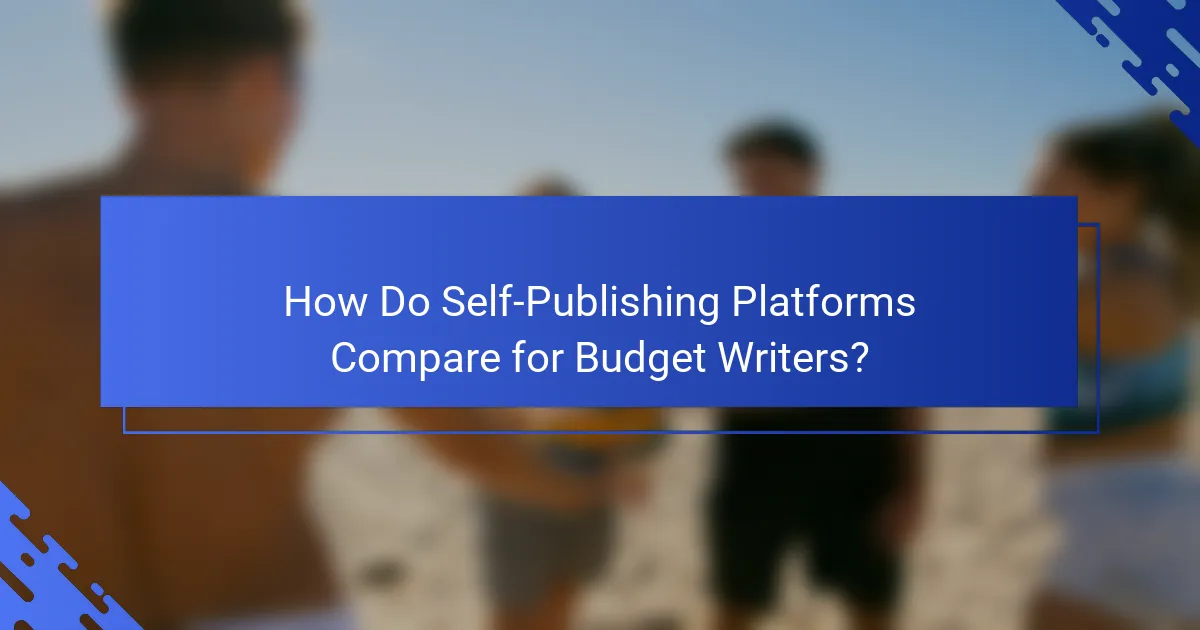
How Do Self-Publishing Platforms Compare for Budget Writers?
Self-publishing platforms vary significantly in cost, making it essential for budget writers to understand their options. Writers can find platforms that charge upfront fees, take a percentage of sales, or offer free services with limited features.
Cost comparison chart
When evaluating self-publishing platforms, consider the initial costs and ongoing fees. Some platforms, like Amazon Kindle Direct Publishing, have no upfront costs but take a percentage of royalties, typically around 30-70%. Others, such as Lulu or IngramSpark, may charge setup fees ranging from $50 to $200, depending on the services selected.
Additionally, be aware of potential hidden costs, such as fees for premium distribution or marketing services. Budget writers should create a simple chart comparing these costs to identify the most affordable options for their needs.
Feature comparison matrix
Features offered by self-publishing platforms can greatly influence a writer’s choice. Key features to compare include formatting tools, distribution channels, and marketing support. For instance, platforms like Draft2Digital provide extensive formatting assistance and broad distribution, while others may focus on specific markets.
Writers should also assess the ease of use and customer support available. A platform with robust support and user-friendly tools can save time and reduce frustration, making it a better choice for those on a budget.
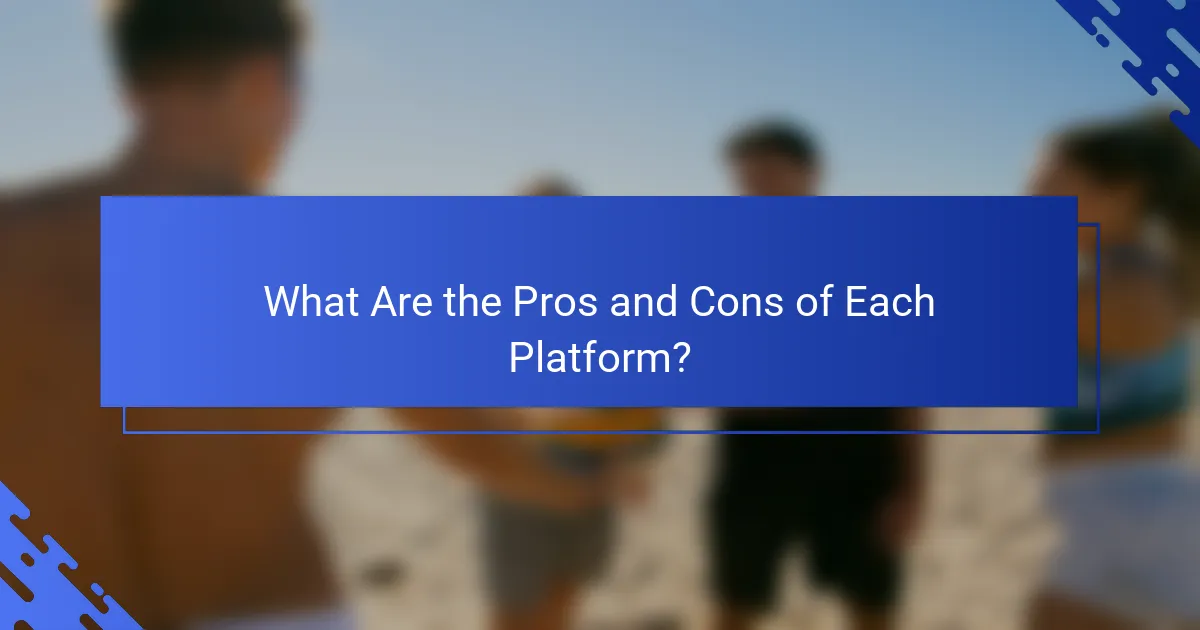
What Are the Pros and Cons of Each Platform?
Each self-publishing platform has distinct advantages and disadvantages that can significantly impact a writer’s experience and success. Understanding these pros and cons helps budget-conscious authors choose the right platform for their needs.
Amazon KDP advantages and disadvantages
Amazon Kindle Direct Publishing (KDP) offers a vast audience reach and user-friendly tools for authors. Its royalty rates are competitive, typically ranging from 35% to 70%, depending on pricing and distribution choices.
However, KDP’s exclusivity requirements for certain programs can limit distribution options. Additionally, the platform’s popularity means increased competition, making it essential for authors to invest in marketing to stand out.
Smashwords strengths and weaknesses
Smashwords provides a wide distribution network, allowing authors to publish their work across multiple eBook retailers and libraries. This can enhance visibility and sales potential beyond Amazon.
On the downside, Smashwords has a more complex formatting process that can be challenging for new authors. While it offers a lower royalty rate compared to KDP, typically around 60%, the broader reach may compensate for this in some cases.
